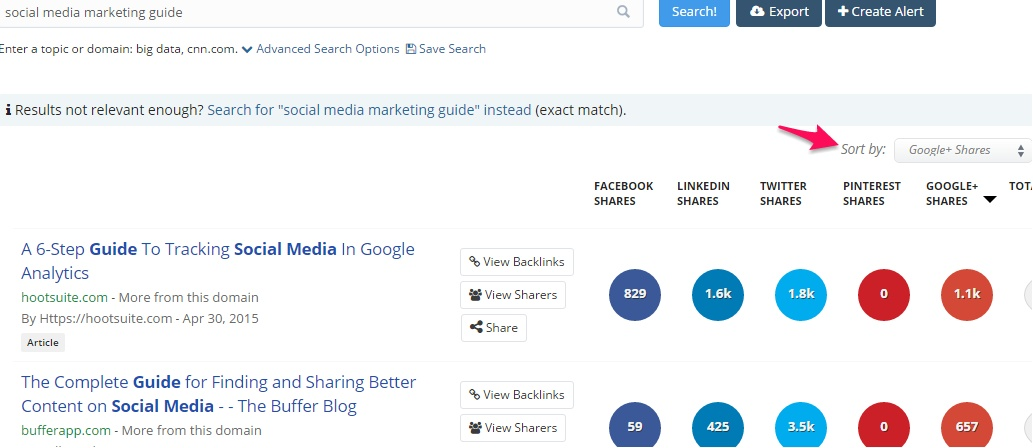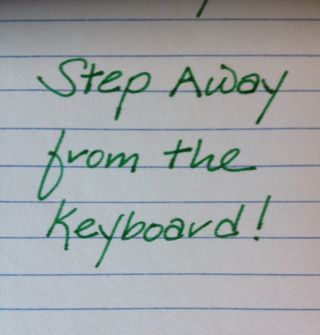Anxiety. Stress. Desperation.
These are typically the 3 stages that lead to your worst nightmare. That blank screen starts draining your energy.
You sigh and scratch your head. Somehow you manage to write a couple of ideas. But again, you lose focus. Your fingers stop moving.
I am sure it has happened with you – writer’s block.
You wonder:
How do creative people find great ways to come up with interesting, new ideas and write high-quality new posts consistently?
Do they never fall victim to this evil block?
I do.
So, how do I manage to write 4-5 high-quality blog posts every week?
It’s because I’ve developed a system for creative inspiration.
That does not mean I don’t fall off the track. But when I experience stress, I have creative solutions and technical tools to calm my nerves.
They work for me.
In this article, I want to share some of these tools and techniques with you that are pivotal to improving the creative process.
By the end of the article, you’ll feel confident and approach writer’s block from a different perspective.
But, before we begin exploring creative strategies, I want to tell you the major factors that lead to a block.
5 events that lead to a writer’s block
The good news about the creativity killer is – it has already been reverse-engineered.
Trying to understand the events that lead to the block will put you in a better position to face it and eventually overcome it.
So let’s get started with 5 of the most common causes.
1. Perfectionism – Most writers aren’t capable of spitting out diamonds in their first draft. So, they make up for it with rough words that fit.
You also need to let go of your lazy writing formations and long-winded sentences. Don’t worry about your grammatical and punctuation slip-ups in the first draft of something new.
Every time you hit backspace to correct a sentence, you lose rhythm.
Then, you lose the idea floating in your head. And then you lose another.
Before you know it, the dreadful block will strike.
The truth is that your search for perfection will never end. Even after polishing every word, you can craft better versions of your sentences.
Shut down your inner editor.
Time yourself.
Let your imperfection give life to your writing.
2. Fear of past success – You just published a massively successful new post getting thousands of social media shares and a hundred comments.
Now, you feel performance pressure. Will you be able to touch the quality of creative inspiration and numbers of your previous content piece?
It’s okay to get such anxiety.
But don’t dwell over that feeling for a long time.
Your job is to write and ship consistently.
Writing helps in developing your creative process. Your audience also appreciates professional conduct. And, they anticipate your articles.
3. Fear of rejection – You have a writing hero, right?
You model their writing and want to achieve the level of success they have from their own supreme creative moments.
But, just as you are about to hit the publish button, you get a strange tingly feeling. You feel your blood flow go cold. A plethora of doubts pours into your head.
What if nobody reads your article? What if your audience does not like your writing style? Do you really have creative talent worth publishing?
How can you deconstruct this fear?
By welcoming the pain and hitting the publish button.
It’s not the end of the world.
Once you get your work out there, you can solicit feedback. Only then will you find out what is working with your writing and what isn’t. You can then tweak your writing and improve your skills.
4. Paradox of choice – Sometimes it can feel stressful to find a subject worth writing. There are so many options. The freedom can leave you paralyzed and dissatisfied.
The solution?
Challenge yourself to write within realms of carefully design constraints.
A couple of brilliant examples are two of Dr. Seuss’ masterpieces (both best-sellers):
The Cat in the Hat – 65-page book written only using 225 unique words.
Green Eggs and Ham – 62-page book written merely using 50 different words.
5. The inevitable boredom of the routine – You were determined to become a top-notch blogger. You started writing 500 words every day. In a couple of months, you managed to scale it up to 1000 words per day.
But, one morning, you feel like giving up. You don’t have any new ideas to work on and you can’t find time to write every day.
Prolific self-improvement blogger James Clear expressed feeling this way recently.
But James didn’t give up. He overcame the pain of discipline and wrote anyway.
You should do the same when the boredom of following a routine kicks in. Use some grit and get to work. It’s a simple yet great way to be productive.
12 creative techniques for beating writer’s block
Even after knowing the causes of a creative inspiration block, you still can’t completely avoid it.
It is inevitable for artists to experience a loss of creative energy and find themselves struggling and doubtful before a blank screen.
As you struggle coming up with creative moments and original ideas, you’ll want to throw in the towel.
Hang in there.
Try these creative techniques used by proficient writers to combat their block.
1. Turn off all digital distractions – There is a huge possibility that you are mindlessly consuming content on the internet.
It’s sucking your energy and making you less productive.
Shutdown your laptop. Resist the temptation to pick up your mobile phone. Take a deep breath and try clearing your mind of junk thoughts.
Once you feel that you are mindful of the current moment, attempt to write again.
2. Free Write – Don’t think, just write.
The goal of the process if to achieve your creative flow.
Play by these rules to achieve optimum results.
- Designate a fixed amount of time and start writing.
- Let the ideas swim to you.
- Don’t worry about punctuation, spelling or grammar.
- Don’t critique your thoughts or written text.
- Write paragraphs, not calibrated lists.
- After the time runs out, read what you’ve written and surface the good ideas.
- Take a writing direction based on the ideas you chose.
If you like your results from the process, incorporate it into your writing routine.
3. Go for a vacation – Do you feel exhausted from consistently meeting the demands of blogging?
Then you might be experiencing burnout.
You need to undo the damage and not let the stress intensify.
A good way to start your recovery by going on a trip.
Harleena from Aha-Now breaks down how bloggers can prepare for a break.
4. Get caffeinated – Coffee is powerful in sparking your creative juices. Within 15 minutes, it’ll enter your bloodstream, buzz up your blood flow and make you feel more alert.
Watch this short video to understand the science of how your brain is affected by drinking coffee.
[youtube https://www.youtube.com/watch?v=4YOwEqGykDM]
Kyle explains how coffee boosts creativity and can help writers and encourage new ideas and the creative process. It’s a great way to replace that blank screen with some inspiring mental imagery and good ideas.
Drink coffee in moderation. Don’t let it mess up your sleeping cycle just for the potential spark of a few creative moments.
5. Change your working environment – Austin Kleon (Writer, Fast Company) has two workspaces. A digital desk for analytical work and a messy analog desk for creative tasks.
- A messy desk can also help you enlighten your dormant creative resources.
- Research has also shown that dimming the lights in your room downplays the room’s distractions and promotes internal reflection.
- Working in a coffee shop with ambient noise (between 50-70 decibels) can also foster creative inspiration.
So, don’t let your workstation stagnate your thinking process.
Experiment with various environments and find the one that works best for releasing your pressure.
6. Clean your house or take a shower – If you’re a fan of the Big Bang Theory, then you may remember Sheldon Cooper working at the Cheesecake factory.
Sheldon was stuck with a physics graphene problem.
After having some sleepless nights, he took an unconventional route.
Inspired by Einstein, he believed that performing a mundane task would ignite his creative inspiration.
And Sheldon is right.
A mundane task like cleaning, driving or taking a shower is a proven great way to relax your brain.
As your brain disengages, the eureka moment can strike.
Good ideas start to surface. Positive mental imagery blossoms. Something new and incredible is sparked.
The next time you’re stuck with an article:
Perform a tedious task – gardening, folding your socks, doing your laundry or cleaning.
7. Listen to relaxing music – Music is linked to our emotions and can be used as an effective stress management tool.
Listening to sublime music calms your nerves and lifts your mood. So, it can help you to focus on writing and inspire a good idea to take root.
Here is a music clip composed using a neuro-programmer. The session claims to energize you and ignite new ideas by clearing your mind.
Give it a shot.
[youtube https://www.youtube.com/watch?v=qIxaP8jzko8]
People have varied choices in music. Some writers find that only instrumental music works for them. Others like Beethoven.
So give classical, jazz and other music genres a shot. Find out what works best for you.
8. Read a novel by your favorite author – Put simply, reading a book improves your brain connections.
It expands your brain to a higher degree than watching a movie or listening to a book.
But, as a good writer, I believe you should have a stack of books.
Bask in the creativity of your favorite author and appreciate the achievements of creative people, in general. Flex your imagination, fill your creative tank and banish the blank screen.
Soon enough, you’ll have a head full of positive mental imagery and feel inspired to get back to the keyboard and pursue something new.
9. Go for a walk – Sitting for long periods is unhealthy. A Huffington Post article labeled sitting as equivalent to smoking for our generation.
No wonder business-minded, creative people like Steve Jobs had walking meetings. Mark Zuckerberg also holds meetings on foot.
Still don’t feel motivated to get off your chair?
Here is the science behind walking.
- Walking clears your head, reduces stress, encourages blood flow and lifts your mood.
- A Stanford study found that your creative output increases by an average of 60% when walking.
And, as a bonus, your creative juices keep flowing for a short period even after you stop walking.
Will you get off the chair already?
10. Play video games – Playing can trigger the release of endorphins – the body’s natural feel-good chemicals. Research has found them to induce a positive mood, to spark creativity and to enhance problem-solving skills.
Take a break from your writer’s block frustrations by having fun with video games. They’re a great way to feel energetic and will fuel up on potent mental imagery and stimulate your imagination.
11. Read/Watch inspirational stuff – You don’t feel motivated from the inside, right? Then, look for it outside in motivational quotes or an artist’s biography on YouTube.
This extrinsic motivation can eventually lead to intrinsic motivation to write.
James Chartrand takes it a step further. He advises using motivational quotes as a source for new blog posts and for beating writer’s block.
12. Sleep on it – Don’t take a walking break. Or drink coffee. Or read a novel.
None of the above strategies will work.
Because maybe you’ve had enough for the day.
Your brain is exhausted.
Let it go and have some sleep.
You can tackle the block tomorrow morning with a rejuvenated mind.
It’s even possible that the inspiring mental imagery of a dream will give you the correct stimulation and restful course of action for creative inspiration.
10 professional content marketing tools to overcome writer’s block
Were creative techniques unable to fill your mind with fresh ideas for writing?
[youtube https://www.youtube.com/watch?v=_kXexe5uVCI]
No problem.
Here are 10 technical tools that’ll steer you away from your block.
Don’t get scared hearing the word ‘technical,’ like most companies.
As a blogger, you need to adopt marketing technology. It’ll help you in automating tedious processes for creative moments and for streamlining your business.
For now, let’s fight your block with tools that seed writing ideas.
1. HubSpot Blog Topic Generator – Just input three nouns and you get a list of blog post ideas for the whole week.
Here are results using mobile technology as a noun.
Here are results using 3 nouns – art, creativity and design.
These results are good starting points for your new blog post.
But, here are tips to extract optimum value from the tool.
Take a writing direction from these headlines. For example: “14 Common Misconceptions About Creativity” looks like a great writing subject.
As a marketer, I can create a post on myths about art.
Like “Art needs an audience,” and offer a solution (building an email list).
You should also model attractive headlines and give them your own spin. The headline you use for your article should fit your brand image.
For example – “The Worst Advice We’ve Ever Heard About Design” goes a bit too far for me. I would rather use “Don’t Commit This Design Mistake (91% of Blogs Do This In Their First Year)”
Finally, don’t pick a title directly. There are thousands of other marketers entering keywords to get the same headlines..
2. Uber Suggest – Have you heard of long-tail keywords?
They are profitable targets for marketers as they convert well.
But, smart content marketers like you also use them in innovative ways:
One way is to give direction to your writing.
Let me show you an example using Uber Suggest – a tool that generates hundreds of long-tail keyword suggestions.
Step 1 – Say you cannot think of a good subject for your next blog post.
That’s all you need to get started with Uber Suggest.
Head over to Ubersuggest.org and enter your target keyword in the query box.
Then, click on the suggest button.
Step 2 – You are presented with 117 long-tail keyword results that are searched alongside your query – ‘make website mobile friendly.’
Step 3 – The above keywords are potential sub-topics for your post on making websites mobile-friendly because they are in demand by your target audience.
Here are the angles you can take in your post:
- Include a subtopic listing strategies of making WordPress websites compatible for mobile.
- Add the coding changes needed on your website’s CSS stylesheet for making your website mobile-friendly.
- Write a tutorial on making websites mobile-friendly using Dreamweaver.
- Scroll down to find more relevant keywords worthy of writing as a subtopic in your post.
In the j section, I found that people are also searching for making Joomla websites mobile-friendly.
Collect all of the keywords that you find interesting.
Step 4 – Filter your collected list of keywords in the third step. Only pick those that are relevant to your target audience.
Step 5 – Structure your post with the selected long-tail keywords as sub-topics. Include any other ideas that strike you and create an outline for your post.
There, you’ve it.
You just defeated writer’s block with a shiny outline that will impress Google and your target audience.
You can also find synonyms and related keywords at the bottom of Google search results.
Look for the ‘searches related to’ option.
3. BuzzSumo – The best validation before writing a blog post is likeability of the idea by your target audience, right?
BuzzSumo is a handy tool you can use to dissect your industry.
It gives you the most shared content pieces on social media for your searched keywords.
You can confine your results to the past year, 6 months or even last week.
When you feel stuck for creative inspiration, head over to BuzzSumo.com.
Think of any broad subject that you want to write on and enter it in BuzzSumo’s search bar. Then, press the go button.
I entered content marketing.
Here are the results sorted by the number of social media shares.
Guess what? You’ve already found many potential ideas for your next blog post.
You can also mess around with the nifty filters inside BuzzSumo.
For finding the most popular content on a particular social media platform uses the ‘sort by’ feature.
You can also plug in your competitor’s blog URL and model their top-performing content pieces.
You can also find trending content in the past week by using the ‘filter by date’ option in the left tab.
I regularly use BuzzSumo for researching popular content and modeling the top-performing headlines. It’s a great way to glean some instant creative inspiration.
As an example:
My fairly popular blog post Get Your MBA in Internet Marketing with These 12 Guides and 2 Courses was inspired by CopyBlogger.
It was based on their successful post “An Internet Marketing Education in 16 Ebooks and 20 Emails. No Charge.”
4. Quora – Millions of curious users hang out on Quora every month.
The brilliant thing about Quora is that it has an engaged community that asks questions on almost every subject.
You can use the popular questions in your niche to spark your idea muscle. Then, write a blog post having a proven demand.
How awesome is that?
Brian Dean dug into Quora to find keywords that many people from the SEO community were using.
Then, he used it in the title of a blog post.
He now ranks number one in Google for the query.
Let’s look at another example.
Suppose you want to write on ‘lcd monitors.’ Here are the most popular questions asked by the Quora community on the subject.
These 3 questions give you sufficient fodder to start writing your article.
Using this untapped marketing tool, you’ll stumble upon subjects not available conventionally.
5. Dig into Google Analytics – Sometimes the solution to your problems is available right in front of you.
But, you need to analyze and draw inferences.
Google Analytics will give insights into the kind of content that has worked for your audience in the past.
Step 1 – Login your Google Analytics account and choose a time frame for seeing your analytics results.
Step 2 – Click on behavior in the left sidebar. Then choose “overview.”
You’ll get the most popular pages of your website.
Step 3 – You can now ideate new angles on your most popular content. There are high chances that your audience will like these articles.
You can also use your analytics to find out your worst performing pages.
Then, analyze why the content piece didn’t resonate with your audience.
Pledge to never repeat the same mistake.
6. WorkFlowy – Want to brainstorm and organize your ideas simultaneously?
Then WorkFlowy is the perfect tool to store your information in bullet form (without any distractions).
It has a minimalistic design with powerful features for navigating, searching and creating a hierarchy.
It’s most famous as a to-do list tool.
However, it’s also powerful for content marketers, because it can organize your ideas like you think (in nested lists).
Here is an outline Zapier created for their blog post on editing tools.
Also, you need not worry about having too many bullets.
You can use the nifty search and hash-tag based tagging features inside the tool.
The design of WorkFlowy is intuitive. You can integrate it into your writing routine right away.
Here is a short video tutorial to get you started.
[youtube https://www.youtube.com/watch?v=C6k5sR_4qJY]
7. Evernote mobile app – Remember I told you that creative inspiration can strike at any time – while you are running, grocery shopping or training in the gym.
For all of these inconvenient occasions, install this useful app on your smartphone – Evernote. It’s a great way to collect new, creative moments on the go.
The best part is that your data is stored on the cloud and it gets synced across multiple devices that you use.
As a writer, ideas are your currency. It’s crucial to capture these precious jewels at whatever inconvenient time they strike.
Using Evernote, you’ll be brimming with new blog post subjects and have a really hard time running into a block.
Finally, if you’re losing too many ideas in the shower, then consider buying Aqua Notes.
8. Mind Mapping – Mind maps are great for brainstorming, planning and organizing your ideas. They’ve been around since the 3rd century CE.
You can leverage them to expand your idea and come up with different angles for writing a blog post.
Say you want to write on ‘Art As A Hobby.’ Here are some possible ways of approaching the subject.
You can also model a popular subject on your blog and brainstorm related ideas. Here are some ideas modeling the title ‘Why you should pick up drawing as a hobby.’
To get started with mind mapping, you can use a free tool like MindMup.
Here are 5 other mind mapping tools recommended by Lifehacker’s audience.
9. Pen and Paper – I already told you how digital distractions could suck your energy.
So if you feel stressed with the white light, I would encourage you to take the classic pen and paper route.
In fact:
Research has found that cursive writing engages more parts of our brain than typing.
Because writing on paper takes more effort and is slower, it forces us to process our ideas deeply.
Step away from your laptop. Buy a notebook and pen and use your hands to beat the block and develop your brain.
10. Implement Pomodoro Technique with Time Doser
Have you ever procrastinated after deciding to sit down and write a blog post?
I have.
Once you open your Facebook or Twitter feed, the endless cycle of consuming content and monitoring your brand mentions starts.
A solution to the problem is the Pomodoro technique. It powers you through distractions and helps you to stay focused within your creative moments.
Here is a short video breakdown of the technique.
[youtube https://www.youtube.com/watch?v=CT70iCaG0Gs]
If you want a free tool to implement the technique:
Use chrome extension Time Doser.
A more professional solution is the Focus Booster App. It has handy analytics features to measure your productivity.
Conclusion
It’s romantic to tell people that you’re suffering from a writing block. Or, you can indulge in self-pity over it.
Don’t fall for these traps.
Unless you are sick or burnt out, you are wasting time.
Research has found that only 22% of our creativity is inherited from our genes. The remaining 78% is determined by the environment, education, and practice.
Take action. Start with a creative inspiration technique I listed.
If it doesn’t work, use a content marketing tool from the list.
You’ll most likely get past the block by taking these action steps.
If you don’t, then you can –
- Leave the current post aside and work on a new project.
- Go to sleep.
But, don’t quit or stress yourself out about the block.
You are an artist. And as Elizabeth Gilbert puts it in this TED talk – you’ve got to show up every day.
What are the techniques you use to fight writer’s block? Do you believe that the block can be overcome using tools and techniques?

























































Comments (48)